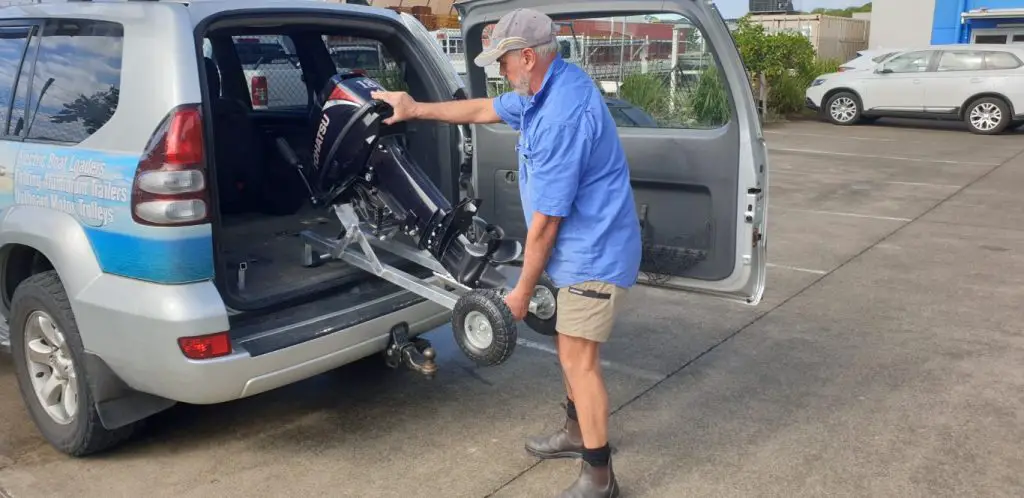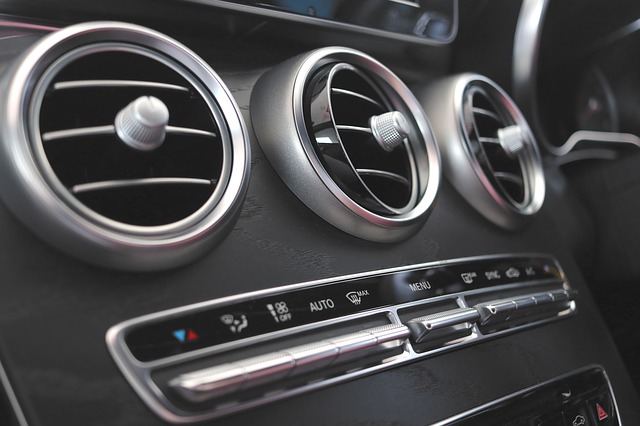The first step is to consider the engine specifications: What is the engine displacement? How tall is the car? It is difficult to get in and out of a car without bending your back, let alone above shoulder height; the problem is not dead weight but discomfort. In this guide, I will teach you how to transport an outboard motor in a car.
Many weigh 45 to 50 kilograms. This includes the crossbars, the box, and whatever they contain. It is more convenient to store low-density items, such as sleeping bags and life jackets. The hardest part will be fitting the outboard into the roof box without peeling the paint off the car, which may be impossible.
The sizes of outboards we are considering should be acceptable in terms of weight for mounting in the roof box (we understand that roof boxes typically have a capacity of 50–60 kg, i.e., about twice the importance of the outboard). Naturally, the outboard motor would have to be strapped/bolted/bolted down to prevent it from bouncing, which would have undesirable implications.
Laying an outboard motor on its side or back is not good. This is something that can happen in winter. In that season, you must drain the engine’s condensation moisture. Evinrude/Johnson has stated unequivocally that four-stroke machines should be stored upright and strongly suggests that all other engines do the same.
Mercury Marine suggests storing upright to allow the engine to drain completely. Although Mercury also states that you can keep a machine on its side once you drain the water completely. Both Yamaha and Mariner adhere to Mercury’s advice.
How to Transport an Outboard Motor in a Car

Before starting to deposit the engine, add a high-quality fuel stabilizer. Do this to the last fuel tank you get. Although it may seem excessive, using 1 ounce of fuel stabilizer for every gallon of gasoline when filling the boat’s tank is not harmful.
It preconditions the engine and gives full protection against moisture damage if transported roughly or stored on its side.
- Take the drain hose and disconnect it from the vapor separator tank (lower right side). After that, drain the tank using an “old fuel” can.
- Open the drain screw on the tank’s left side and drain any remaining water or fuel using a screwdriver.
- Reattach the hose and shut the valve.
- You must unplug the hose from the lower left side of the tank. Then, open the tank’s right side to access the drain screw. This allows draining any remaining fuel and water.
- Tighten the screw. Finally, plug the drain hose. Remove the fuel filter that separates the water from the fuel.
- Connect the engine to a flush adapter and a garden hose. The idea is to make the cooling system flush. Next, turn on the water, and start the engine.
- Fill the oil reservoir with clean oil to coat the engine bearing surfaces with a thin sheen of oil, thus preventing rust from forming at these locations. Allow for 15 to 20 minutes of engine operation.
- Turn off the engine. After disconnecting the fuel line, quick connect between the fuel tank and carburetor. Apply fogging oil to the carburetor. Then, let the engine cool itself.
Loosen the spark plug wires by twisting and pulling.
Using a spark plug wrench, remove the spark plugs from their holes and spray the fogging oil into the cylinders to prevent them from igniting. You’re almost finished with your preparations. Replace the spark plugs if necessary.
Removing the engine from the back of the boat requires disconnecting the quick-connects on the fuel and oil tanks. But not the oil hose, which should be connected to both the engine and the tank, using caution, turn the machine on its side.
Frequently Asked Questions
How to Transport Loads
When transporting any weight, load your vehicle or trailer safely to avoid endangering other road users, yourself, your passengers or causing damage to road infrastructure. This involves verifying that your load complies with the following.
- It is secure enough.
- It is not hung dangerously.
- Not exceeding volume constraints.
- It excludes lights, indicators, reflectors, and license plates.
- Restraining your load
If you drive a light vehicle, you are responsible for ensuring that your load does not cause the car to become unstable or unsafe and that it cannot fall or become detached from the vehicle.
To ensure the safety of your load, you should choose the right vehicle. Proper positioning of the load requires adopting the appropriate load restraint mechanism.
Will the load create a hazard for other road users?
A protruding object from the front, rear or side of your vehicle could cause other motorists to become distracted, collide with other vehicles, or injure pedestrians. Always remember to stay within the legal boundaries, especially on short excursions.
Will the load create a hazard for you?
Extremely heavy or oversized loads can impair your ability to steer and brake properly. An improperly placed load can obstruct your view of the road. All of these factors can increase a collision situation. Check that your rearview mirrors still provide a good idea.
Bottom line
Most fiberglass sailboats of small manufacturers have a relatively flimsy transom. So, towing them is not allowed when equipped with an outboard. You can get away with a 12-pound cruiser and carry it.
However, anything more than that can cause the transom to flex. In addition, it possibly damages when the trailer goes over bumps on the freeway. While some sailboats are built to accommodate it, and the owner has modified others, most sailboats must be towed without the engine.
They often leak oil, are covered in slime, and lose water for a while after use in the case of water-cooled devices. If you have a pickup, just put them in the back and don’t worry about the mess they make; that’s the purpose of the pickup bed.
We must devise a method to keep the dirt from spreading throughout the interior for the rest of us who drive cars with carpeted storage spaces.







